Image noise, like random grain or specks, can ruin the quality of a photo. It often appears in pictures taken in low light or with high ISO settings. This noise makes images look unprofessional, hides important details, and reduces their overall appeal. Photographers and designers face challenges when cleaning such images for personal or professional use.
Photo noise reduction software fixes these issues by removing unwanted imperfections while keeping key details intact. These tools can transform grainy, low-quality images into clear and polished works. As high-quality visuals are crucial in almost all niches, the demand for such AI noise reduction tools continues to grow. This article will explore the best noise reduction software to improve your photos, and show you AI-powered solutions to enhance clarity and reduce photo noise without compromising quality.
In this article
Part 1. Exploring the Top Noise Reduction Software: 8 Tools Discussed
To address the issue of blurriness or pixelation in your images, the digital market is cluttered with noise reduction software. In this section, we’ll explore some of the top software, focusing on their features and limitations to help you choose the optimal solution for your needs.
Tool 1. Repairit
Topping our list of best image noise reduction software, Repairit stands out for its ability to fix grainy images within seconds. Its advanced AI-powered features reduce imperfections while preserving essential details to ensure your photos look sharp. This advanced software provides a simple yet effective solution, whether dealing with low-light shots, high ISO noise, or minor distortions.
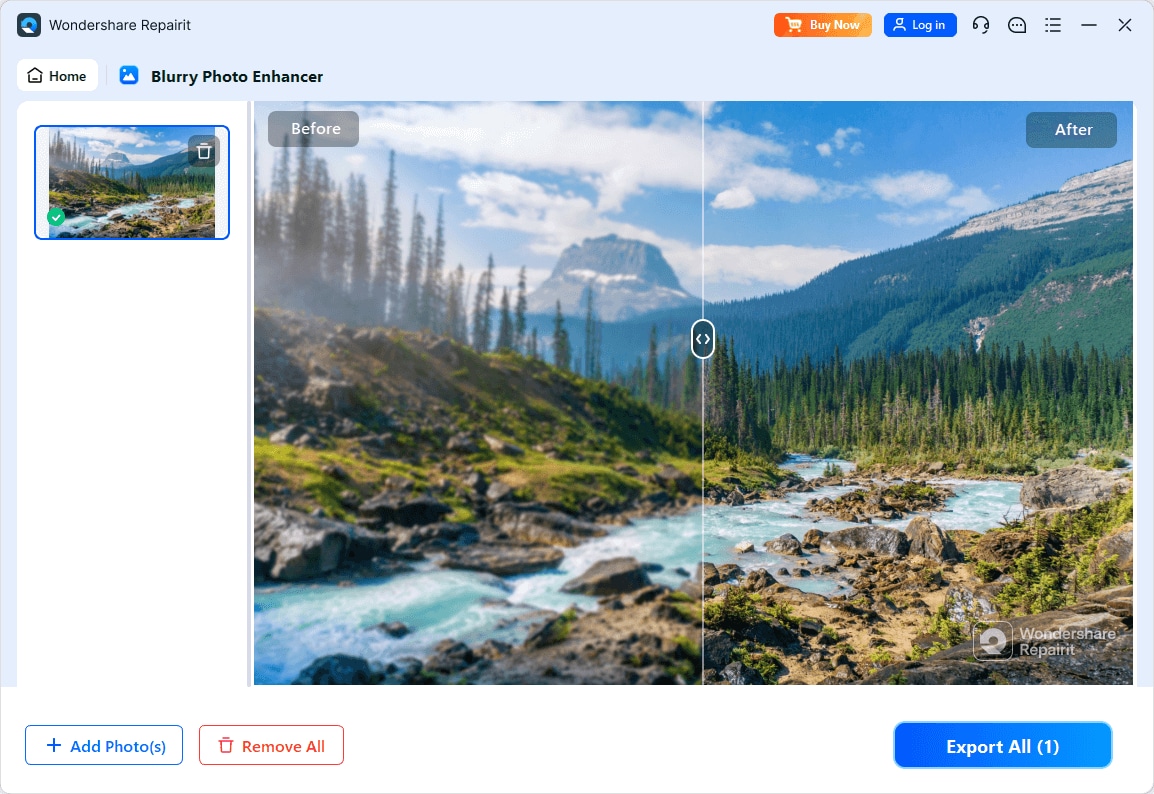
The AI algorithms analyze the image to distinguish between actual details and noise, ensuring that the important elements of the photo remain untouched while the noise is eliminated. It can even fix overexposure and eliminate printed grid lines from scanned or printed images. Moreover, using Repairit, you can remove blurriness from the images.
Key Features
- Its Image Upscaling feature can increase photo resolution by up to 8x using super-resolution AI technology.
- With its Portrait Enhancer, you can adjust the light balance and enhance facial features for added detail.
- The Photo Repair tool also provides you with the ability to restore old photographs.
- AI Photo Enhancer adjusts the colors in an image for a more natural look.
Tool 2. Adobe Photoshop
Adobe Photoshop provides advanced tools for image enhancement, helping photographers. Talking about noise reduction, it provides extensive settings tailored to various needs. For example, it includes a Strength slider that allows you to adjust the overall intensity of the noise reduction process. This slider helps control how much noise is removed, giving you flexibility over the desired result.
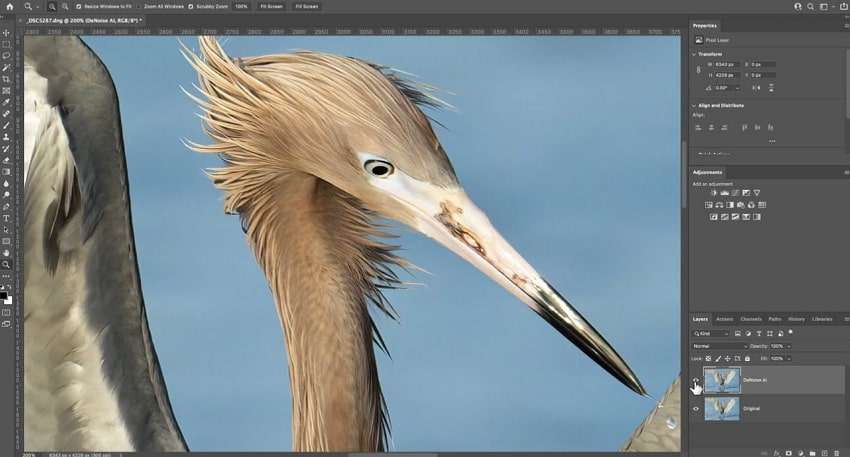
Key Features
- You can specify the Preserve Details percentage, which helps maintain image details while reducing noise.
- The Reduce Color Noise slider removes color specks or noise, typically seen as random colored pixels in low-light areas.
- Using this image noise reduction software, you can also remove luminance noise from the images.
Tool 3. Topaz DeNoise AI
Try this advanced software to remove noise from photos since it leverages AI to distinguish between noise and important image details. It is specifically designed for various types of photography, such as wildlife, night, macro, and portrait images. Topaz DeNoise AI eliminates noise while enhancing fine details, ensuring that photos retain natural texture, like skin tones in portraits or the sharpness of feathers in wildlife shots.
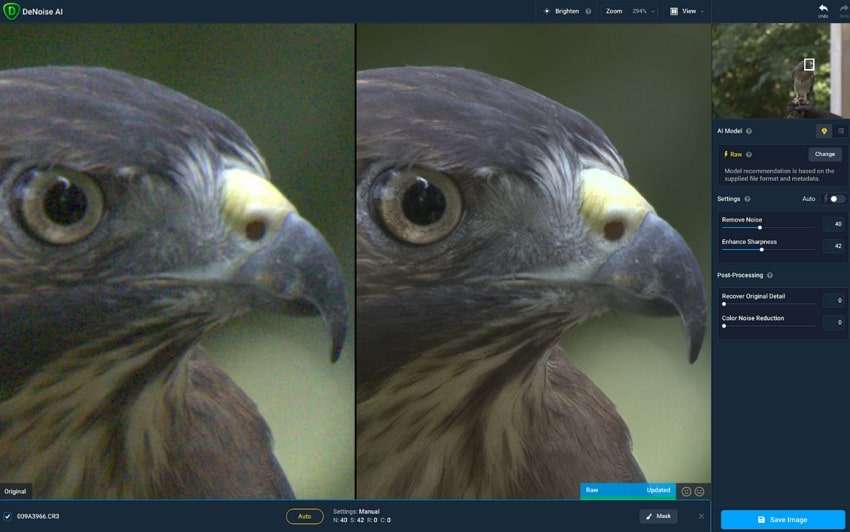
Key Features
- Topaz Denoise AI supports both RAW and JPEG files for noise reduction.
- Unlike traditional noise reduction tools, this software includes 4 AI noise reduction models.
- Users can even eliminate unwanted photo artifacts using the Color Noise Reduction feature.
Tool 4. Luminar Neo
With this image noise reduction software, users can enhance their photos without any hassle. Known for its intelligent Noiseless AI feature, Luminar Neo removes noise from images while preserving details. It uses advanced algorithms to reduce noise in images with low-light or high-ISO shots. Plus, it is compatible with a wide range of camera models, making it suitable for photographers using various equipment.
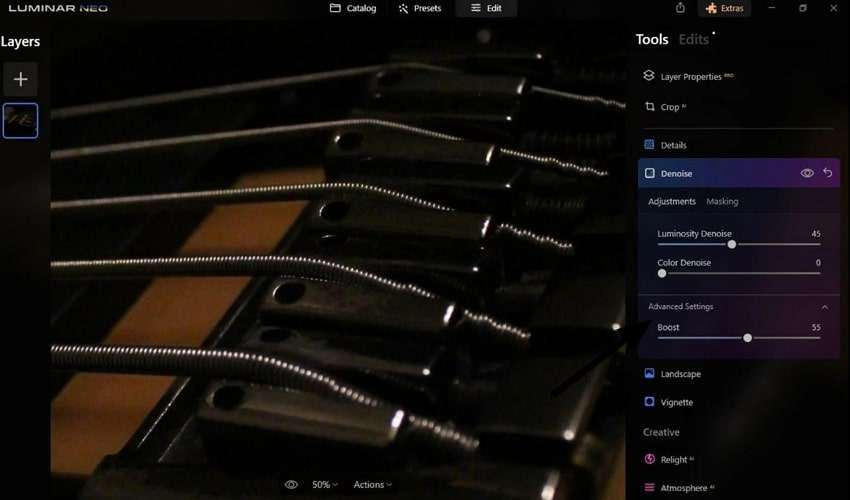
Key Features
- Using the Color Denoise slider helps reduce color noise in images, smoothing out unwanted color specks.
- Users can replace damaged pixels with surrounding pixels, creating a more polished appearance.
- It also lets you remove color distortions that appear around the edges for a cleaner look.
Tool 5. DxO PhotoLab
This best photo Noise Reduction software offers a variety of advanced features that significantly enhance image quality. DxO PhotoLab includes Executive Optical Blur Compensation, which ensures sharpness across the entire field of view, not just the center. Moreover, its Noise Reduction feature is powered by deep learning technology, reducing graininess from images while preserving intricate details.
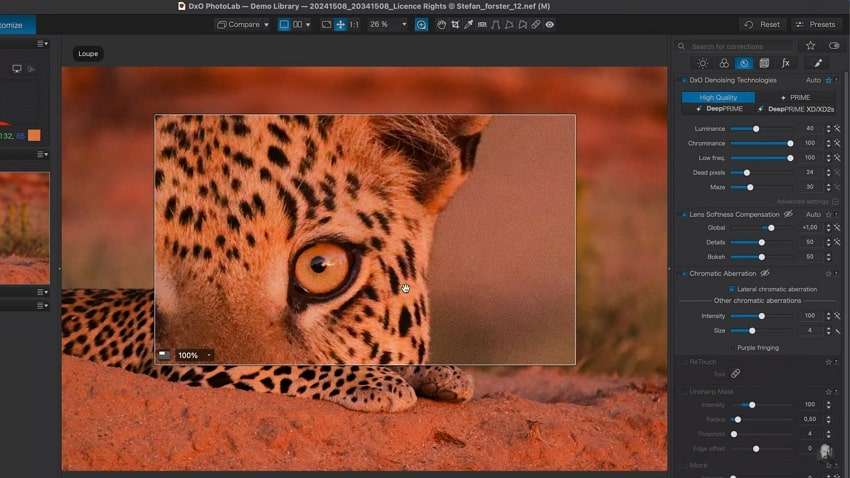
Key Features
- By adjusting the Luminance slider to your desired level, you can control the amount of noise reduction caused by lighting.
- The Force Details slider allows you to fine-tune how much detail should be maintained in the image.
- Using the Dead Pixels slider, users can adjust the intensity of pixels that appear in images due to sensor flaws.
Tool 6. ON1 NoNoise AI
The ON1 NoNoise AI 2024.5 version includes updated AI noise reduction models. They provide more natural results, making it especially beneficial for astrophotography and wildlife photography. Besides, these new models reduce artifacts and halos, ensuring cleaner and sharper photos. Furthermore, this image noise reduction software includes AI deblurring models that decrease motion blur from images to make them sharper.
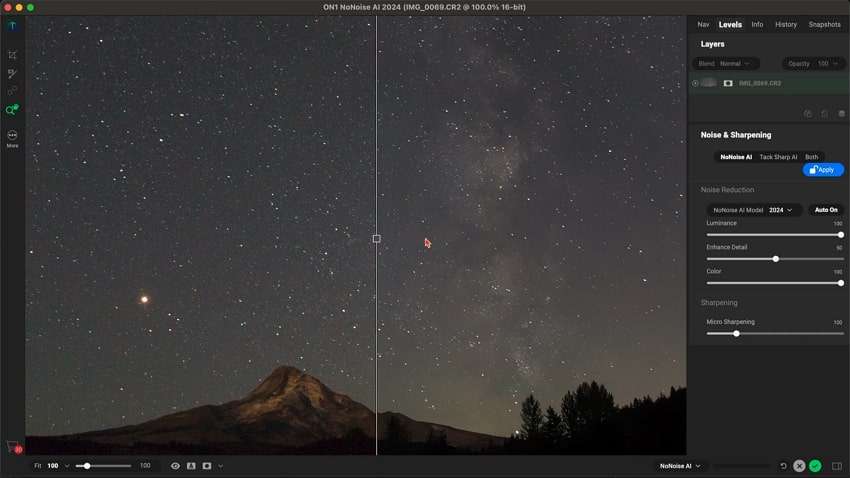
Key Features
- You can enhance the details in your images using the Micro Sharpening feature.
- Its AI also supports various image file formats, including DNG raw files.
- Users can correct poorly focused and motion-blurred images using the Track Sharp feature.
Tool 7. AVCLabs Photo Enhancer AI
As the name suggests, this software to remove noise from photos is specifically designed to improve the quality of images. Its intelligent algorithms ensure that the visual elements remain sharp without blurring, making it ideal for creating professional-quality images. AVCLabs caters to various occasions, whether for events, everyday moments, or landscape photography, and effortlessly enhances the clarity and depth of photos.
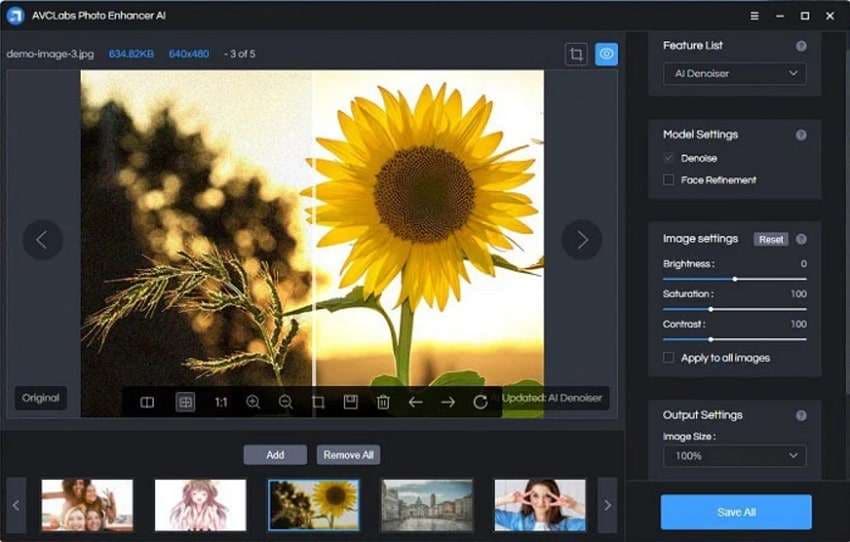
Key Features
- Users can enhance multiple images at once with the batch processing feature.
- It supports multiple formats like JPG, PNG, and RAW for noise reduction.
- You can enhance your old black-and-white photos with the colorization feature.
Tool 8. Aiarty Image Enhancer
Aiarty Image Enhancer is an excellent option for users looking for user-friendly free image noise reduction software. Leveraging advanced AI, this software can upscale your images even up to 32K. Moreover, you can enhance blurry or pixelated images using its Deblur feature. Despite that, this software excels in reducing various types of noise using deep learning algorithms for better clarity.
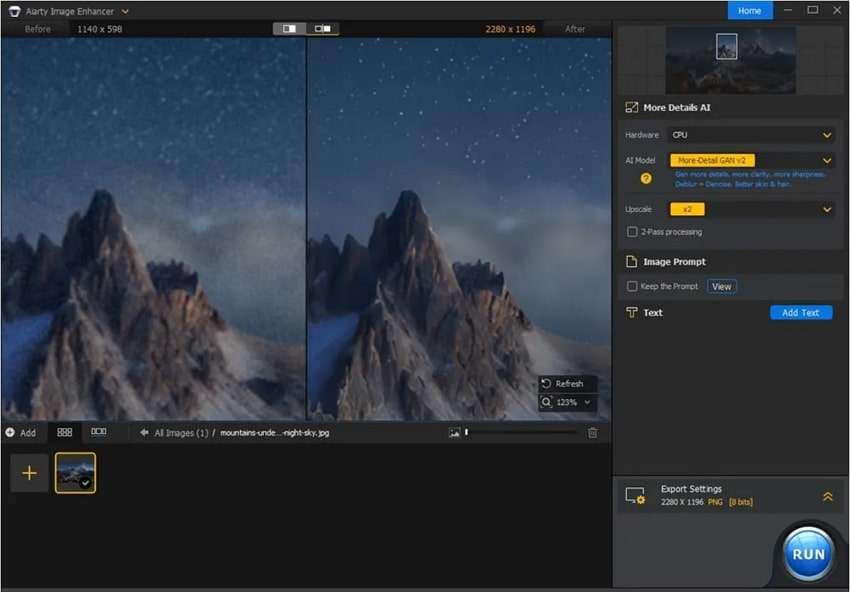
Key Features
- While removing noise, Aiarty Image Enhancer preserves intricate details even in low-quality images.
- You can even remove noise from digital and scanned images.
- This image noise reduction software is also capable of restoring compressed, distorted images.
Comparison Table: How to Choose Best Noise Reduction Software
| Software | Platform | AI Support | Pros |
| Repairit | Windows, Mac, Android, iOS, Online | Yes | One-click AI enhancement restores blurry or damaged photos instantly, making it easy for all users. |
| Adobe Photoshop | Windows, Mac | Partial | Professional-grade editing, extensive RAW support, trusted by photographers. |
| Topaz DeNoise AI | Windows, Mac | Yes | Removes noise while preserving details, ideal for professionals. |
| Luminar Neo | Windows, Mac | Yes | AI features plus creative tools are user-friendly for editors. |
| DxO PhotoLab | Windows, Mac | Yes | Advanced RAW processing, precise AI enhancements for professionals. |
| ON1 NoNoise AI | Windows, Mac | Yes | High-quality noise reduction preserves fine details. |
| AVCLabs Photo Enhancer AI | Windows, Mac | Yes | Automatic quality and color enhancement with AI. |
| Aiarty Image Enhancer | Windows, Mac | Yes | Quick AI enhancement focusing on clarity and color. |
For fast, reliable photo enhancement, Wondershare Repairit stands out with its AI-powered one-click solution. Professionals looking for more advanced editing and RAW support may turn to Adobe Photoshop, but it requires more expertise and system resources.
Part 2. How to Remove Noise from Photo with Repairit?
Having explored Repairit as the best photo noise reduction software, you're now ready to proceed with the image noise reduction process. This section provides a detailed, step-by-step guide on how to utilize this software to enhance your image.
Benefits of Using Repairit for Noise Reduction
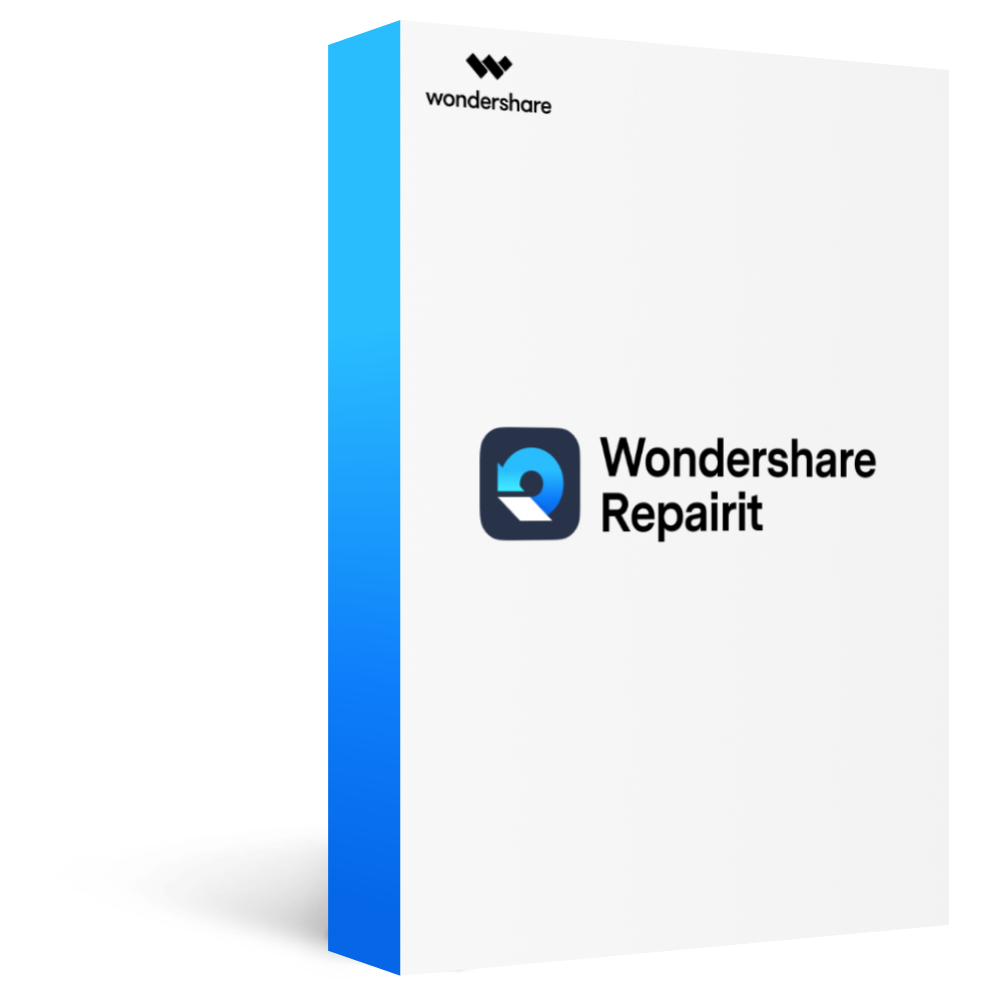
Wondershare Repairit - Photo Repair

-
Repair damaged photos with all levels of corruption, such as grainy photos, dark photos, pixelated photos, faded photos, etc.
-
Repair images of diverse formats, such as JPG, JPEG, PNG, CR3, CR2, NEF, NRW, etc.
-
The cross-platform compatibility ensures that users can reduce noise on Mac, Windows, and even online.
-
It offers a simple and blazing-fast interface that even beginners can easily navigate through its features.
-
The "AI Image Upscaler" feature can enlarge the repaired photos to 2X, 4X, and 8X.
-
Intelligently restore old/scratched photos and colorize black and white photos with various AI effects.
-
No limit to the number and size of the repairable photos compared with the online version of Repairit.
-
Support Windows 11/10/8/7/Vista, Windows Server 2003/2008/2012/2016/2019/2022, and macOS 10.12~macOS 13.
Step 1. Access the AI Photo Enhancer Tool
There, click “More Types Repair” in the left panel and select “AI Photo Enhancer” to proceed.
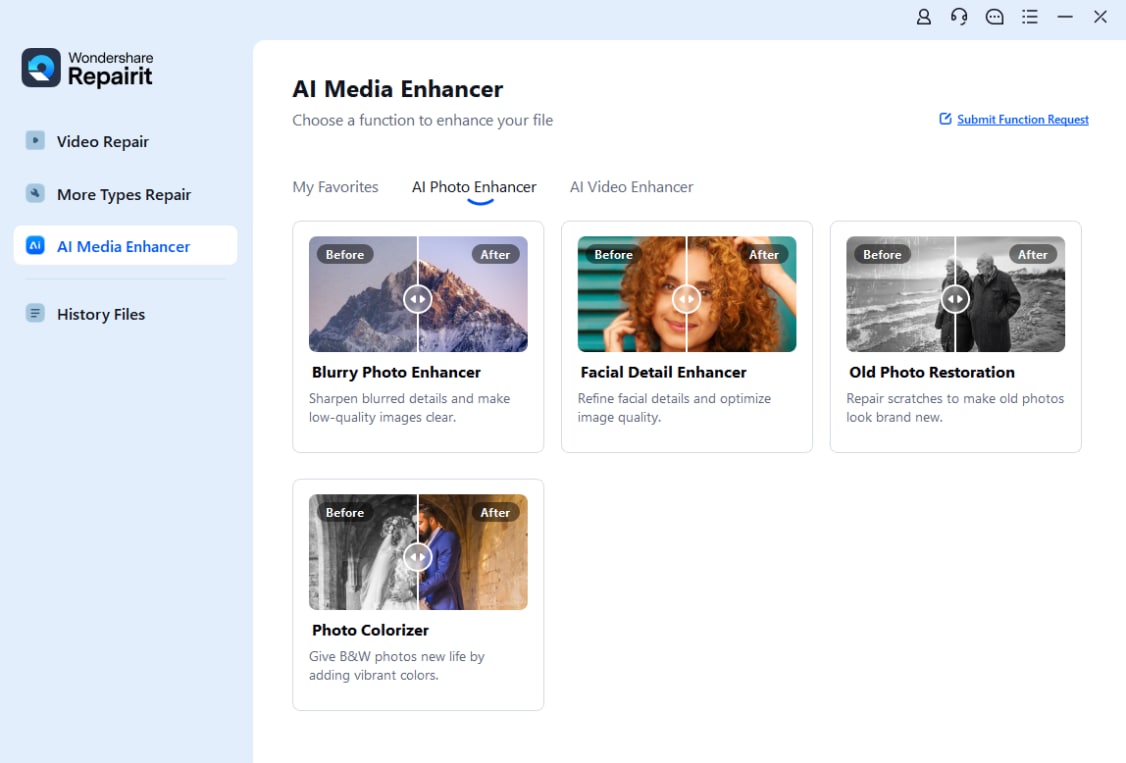
Step 2. Import the Photo for Enhancement
Tap the “+Add” button to import the photo you want to enhance within the new window. You can also drag and drop photos to the designated area for easy importing.
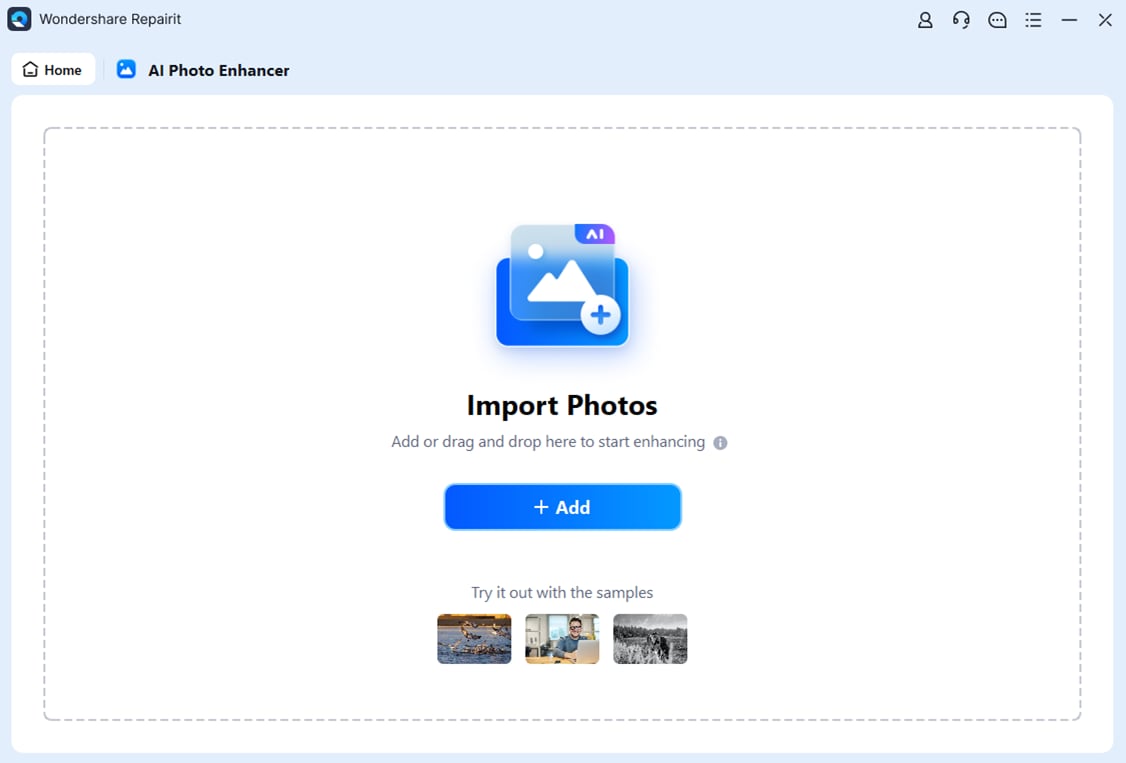
Step 3. Choose the General Model for Increasing Resolution
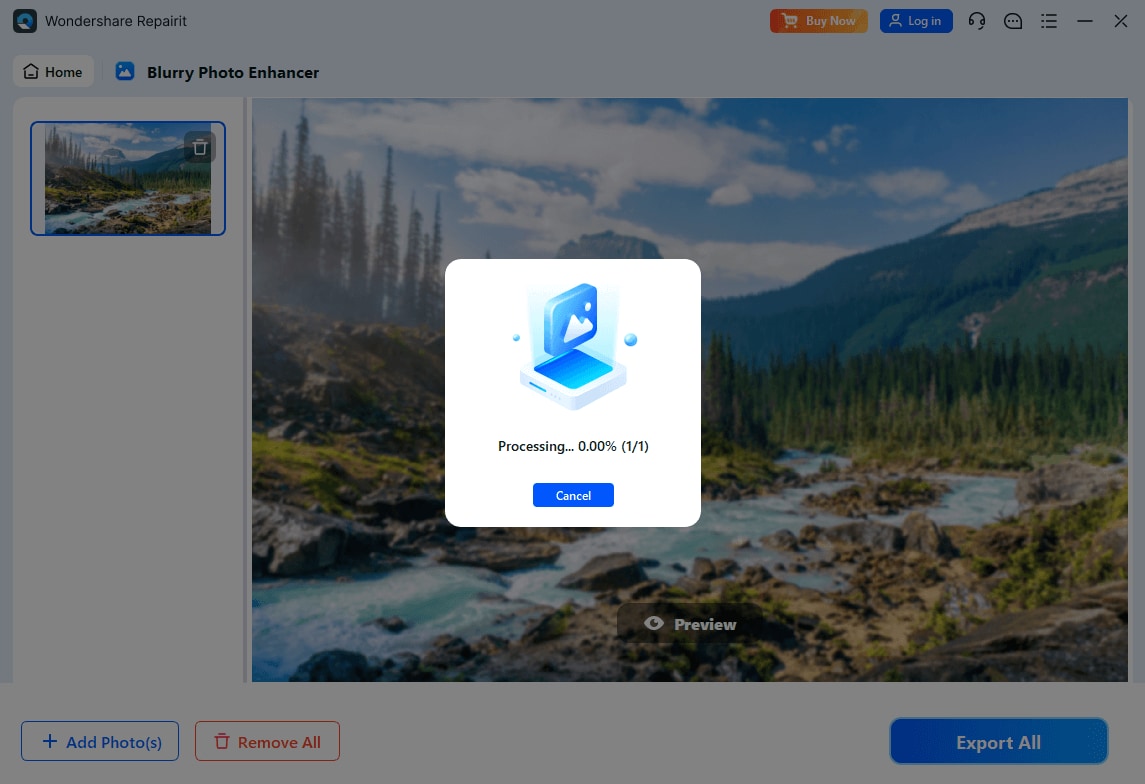
Step 4. Save the Enhanced Photos with the Save All Button
You can preview the results when the noise reduction process is complete. Once you're satisfied with the output, press the “Save All” button to export the enhanced image to your device.

Repair Corrupted RAR Files

Conclusion
After a lengthy discussion, we can conclude that low-light conditions or high ISO settings often increase image noise. This article discussed the 8 best photo noise reduction software in detail, each offering unique features. Therefore, among all the options, Repairit stands out as the best noise reduction solution. Its ease of use, cross-platform compatibility, and comprehensive image enhancement feature make it a top choice.
FAQ
-
Q1. Why should you consider removing noise from photos?
Noise in the form of excessive pixelation and blurriness can distort the details in your image. For this reason, you must use noise reduction tools to enhance the sharpness and smoothness of images. They can significantly help preserve image details, such as textures and edges. -
Q2. What are the features you must look for in noise reduction software?
You must look for tools that can adjust noise reduction levels. Additionally, the chosen tool must minimize noise without blurring or losing sharpness in essential image details. Lastly, if you have multiple images, look for a batch-processing feature to apply noise reduction to multiple files at once. -
Q3. How to ensure a high-quality noise reduction process?
Start by working with RAW images, as they retain more data, allowing for better preservation of details during the process. Moreover, the noise reduction settings should be adjusted gradually to prevent over-processing. Plus, review your image at high zoom levels to detect any artifacts or loss of quality that might not be visible at a lower resolution. -
Q4. Which is the best software to reduce noise in photos?
The best software to reduce noise in photos varies by user. Wondershare Repairit is ideal for beginners with its AI one-click noise reduction, while professionals often prefer tools like Topaz DeNoise AI or Adobe Photoshop for more advanced control.
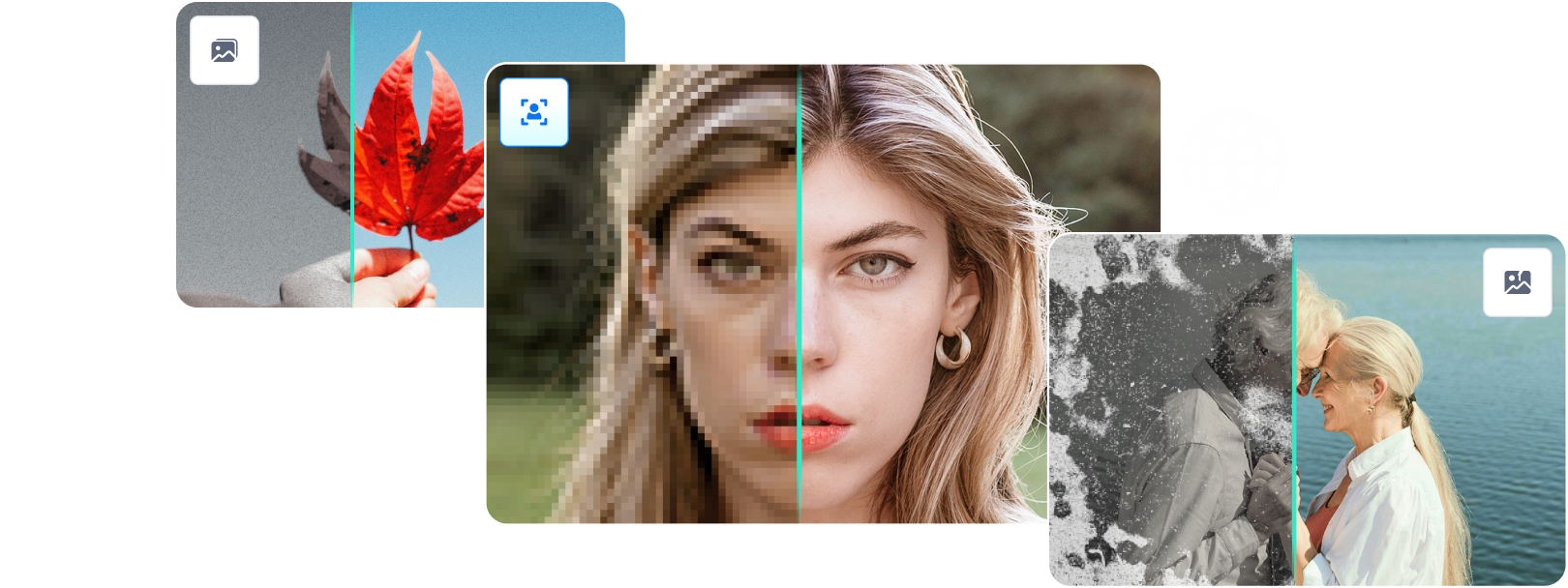


 ChatGPT
ChatGPT
 Perplexity
Perplexity
 Google AI Mode
Google AI Mode
 Grok
Grok
